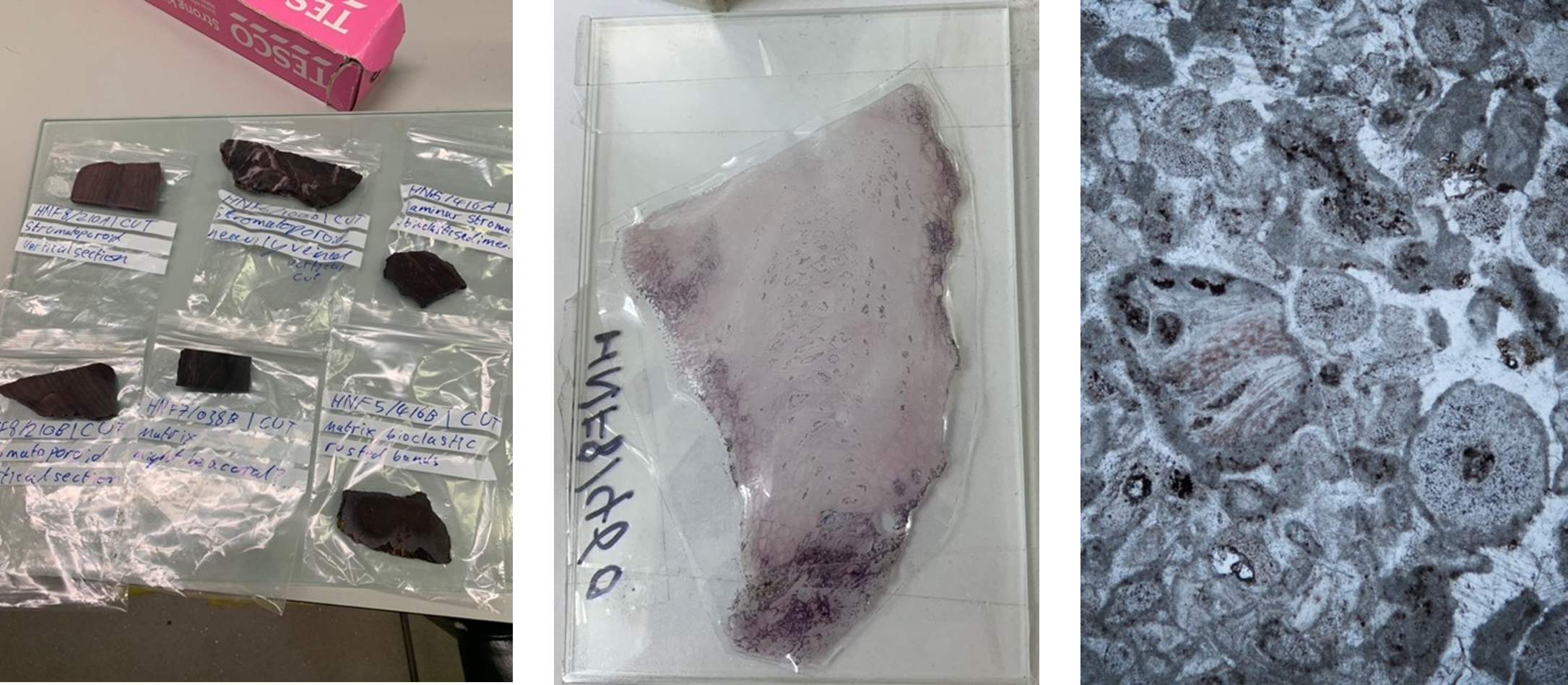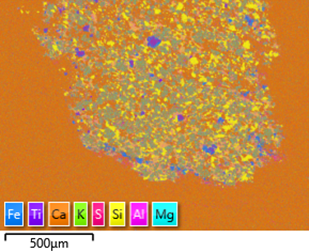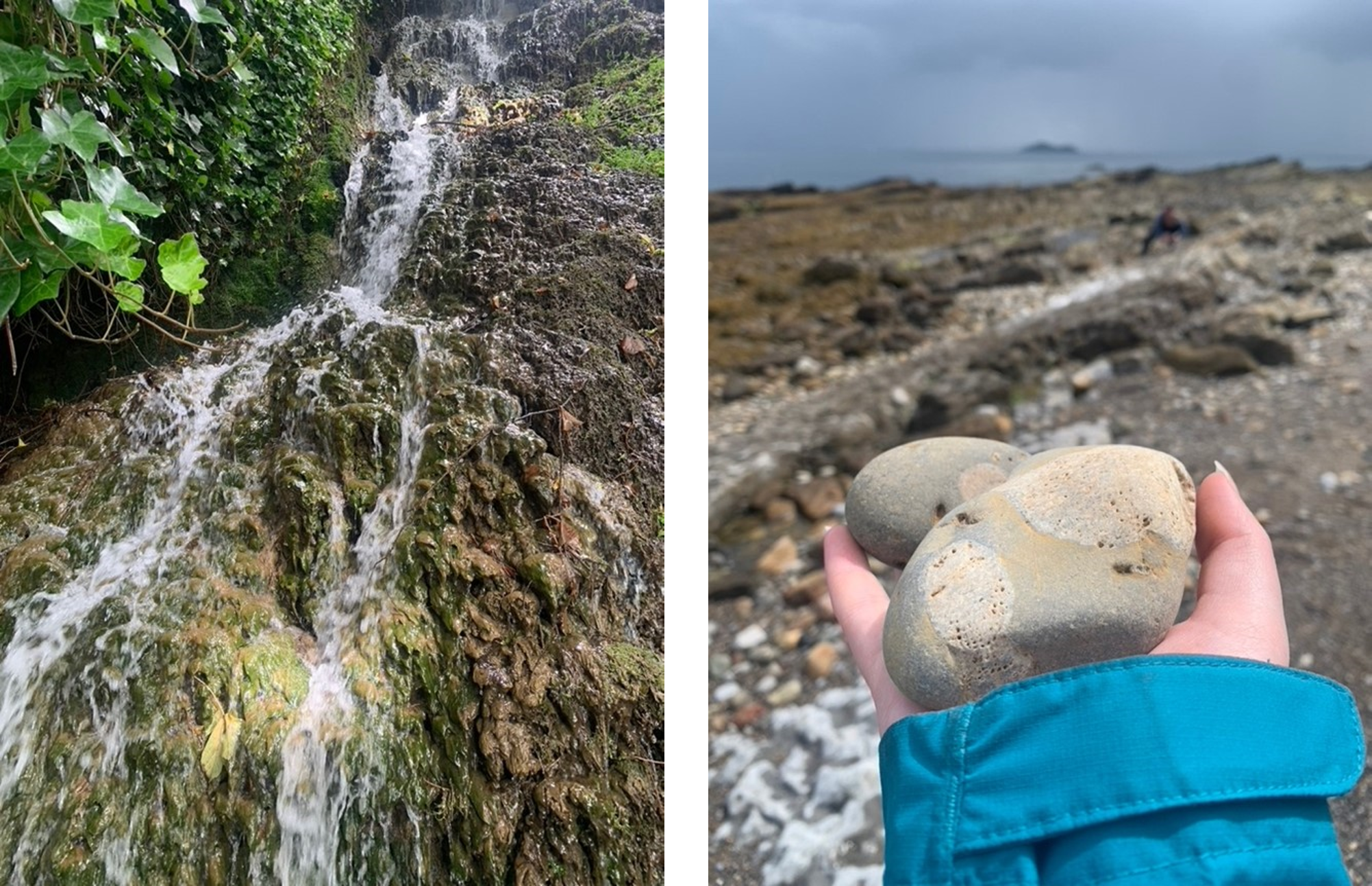Author: Abbie Esslemont, Master of Chemistry, University of Aberdeen
Project: Searching for influxes of sediment to an ancient coral reef: Microscopy and geochemistry of the mid-late Devonian rocks of Torbay
Supervisor: Alex Brasier & Cian McAuley, School of Geosciences, University of Aberdeen
Not long before the beginning of the summer break, I was wondering how I was going to spend my time off. As a 4th year student, I wanted to do something that would apply my skills and knowledge I have gained at university. At the end of April, I came across summer placements run by QUADRAT. As a chemistry student these were ideal as they were all science based but in different disciplines to what I study. I thought it would be a fantastic opportunity to gain some experience in a different area and I was fortunate enough to be chosen for the geoscience project I applied for.
The overall PhD project is to investigate how the evolution of land plants impacted ancient shallow marine coral reef ecosystems. My role during the project involved working with samples that had previously been obtained from two sites in the Torbay area of Devon – Hope’s Nose and Saltern Cove. With these samples I was trying to quantify siliciclastic and carbonate materials within them. To do this I spent 7 weeks using various techniques such as optical microscopy, X-ray fluorescence (XRF), carbon and sulphur combustion analysis and scanning electron microscopy (SEM). Obtaining and processing the data gathered from all of these techniques was an invaluable experience and I found that this was something I really enjoy doing.
The first task I did during the project was create thin sections that could be viewed under an optical microscope. Preparation of the thin sections involved polishing and staining samples which was lab work that I had never done before so I enjoyed the process of learning new skills. Getting to view the thin sections under the microscope was also a new experience which I found fascinating. Some of the stained samples and an example of a thin section I prepared are seen in figure 1. An image of some fossils in the samples that could be viewed under the microscope is also seen. As I quickly learned, round, donut-like features are fossils of organisms called crinoids.

The main reason I applied for this project was because it had very strong links to chemistry due to all the different analytical techniques I would get to use. In particular, SEM was a big part of the project. I have learned about the theory of SEM in lectures but never got to do it myself, so I saw this as an excellent opportunity to gain first-hand experience with it. Seen in figure 2 is an image obtained from the SEM machine of one of the samples. The image details what elements are present and where they are located in the sample. The opportunity to gain experience with the SEM machine was amazing as I was able to learn more about how it works and what types of data can be obtained from it. This is valuable knowledge that I can implement if required in my future studies/career.

I was very lucky in my placement to get to do lots of lab work which as a chemistry student is always welcomed. Most of the lab work I did was unfamiliar to me so it was great learning how to do different things and will be useful in my continuing studies. I was even fortunate enough to get to go on a field trip to Burntisland and Kinghorn with my supervisors. We spent the day collecting water samples from a waterfall and then collecting fossil samples from a beach. Some pictures from the trip are seen in figure 3. I thoroughly enjoyed the experience and it made me realise I would like to go into a career where there are opportunities to explore the world and not sit at a desk all day.

Overall, this placement was a fantastic experience and has provided me with insight into what a career in research is like. It certainly has shown me that I am able to implement skills I have learned throughout my degree to new disciplines and that I am not limited to only chemistry-based jobs. I now know that there are a wide range of areas that I could venture into in the future. I was lucky to have excellent supervisors who were more than happy to answer any questions and aided me in learning new skills. For anyone looking into a career in research or even just someone looking to try something completely new to them, I would recommend applying to a QUADRAT summer placement next year!





















































